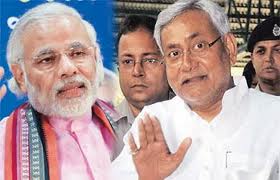
Ahmedabad, December 31: Days after making a political point by having a range of regional leaders attend his swearing-in, Gujarat Chief Minister Narendra Modi once again reached for a larger national profile by being the only chief minister to speak on national affairs at the NDC meeting on Friday.
Recent praise from union minister Praful Patel of the Nationalist Congress Party, a UPA partner, has only helped Modi. In Mumbai on December 28, Patel said: “Modi was successful in gaining trust of the people. Modi won because of the work he has done,” Praful Patel said.
At the NDC meeting, Modi held forth on “policy paralysis and lack of leadership” at the Centre. He said the world was looking at India for development but the country was pessimistic, even as he presented Gujarat as a model of growth.
Sources said Modi’s gameplan is to create an NDA minus the sulking partner Janata Dal-United and its Bihar Chief Minister Nitish Kumar. Besides Jayalalithaa of the AIADMK, Om Prakash Chautala of the Indian National Lok Dal, Ramdas Athawale of Republican Party of India and Raj Thackeray of Maharashtra Navnirman Sena attended his swearing-in — none of them is an NDA partner at the moment.
Overtures are also being made to Naveen Patnaik of the Biju Janata Dal and Asom Gana Parishad, who are former NDA allies. The Shiromani Akali Dal is still with the NDA and so are Shiv Sena, Jharkhand Mukti Morcha and other smaller parties.
At the NDC meeting, Modi simply ignored Nitish Kumar at the NDC meeting, held just a day after his glittering swearing-in event that the JD-U boycotted. He went around greeting everyone including Maharashtra Chief Minister Prithviraj Chavan, and congratulated Congress veteran Virbhadra Singh for his huge victory in the Himachal Pradesh assembly elections. When mediapersons asked him if he would not meet Nitish pointing to where he was sitting, Modi only thanked them for drawing his attention.
Praful Patel’s statement here is significant despite the fact that the NCP did not attend Modi’s swearing-in though concerted efforts were made to get veteran leader Sharad Pawar there. Addressing party workers in Mumbai, Patel asserted, “In Gujarat, we had a tie-up with Congress to avoid division of secular votes. However, the Congress put up candidates in all the seats NCP contested. A review should be done to find out who is responsible for the defeat in Gujarat.
NCP had contested nine seats in the Assembly elections and its candidates won in two constituencies.
“Ideologically, we are with Congress and will continue to be with them. But there is nothing wrong with thinking about our growth,” he said.





Comments
Add new comment